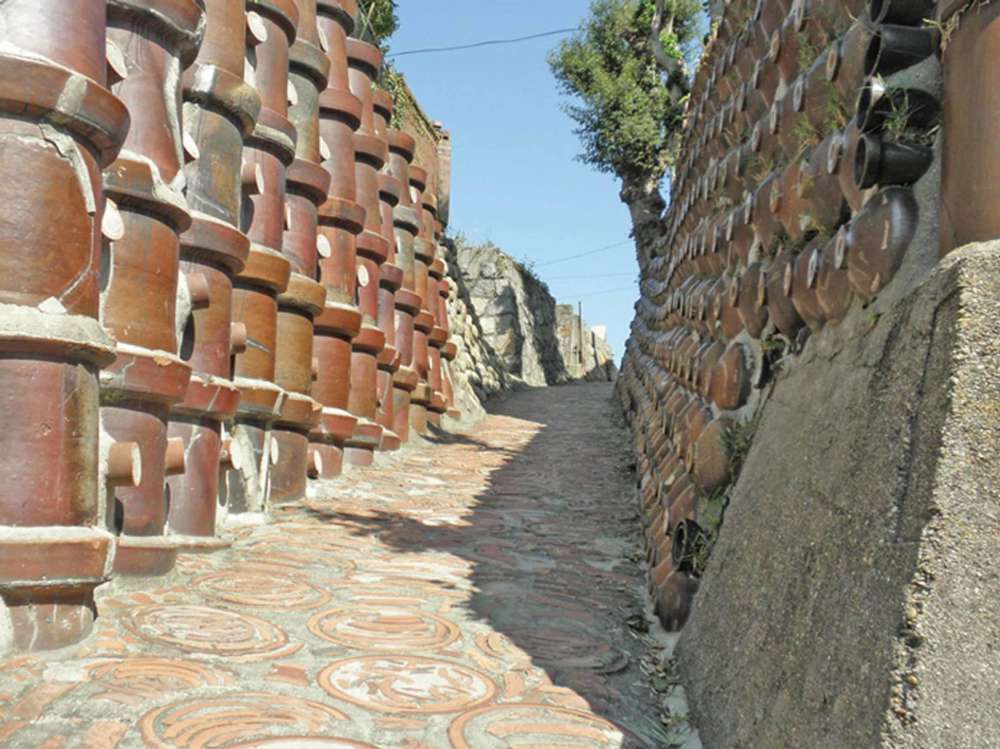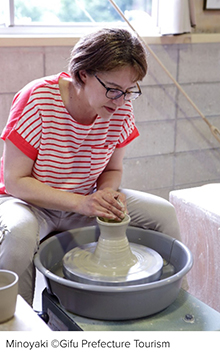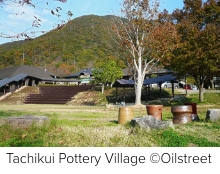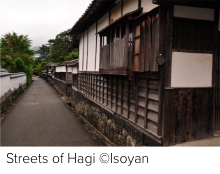
Japan has one of the oldest ceramics traditions in the world with prehistoric Jomon era pottery estimated to date back as far as 14,000 BC. With this impressive history, it’s no wonder that the country is full of different styles and traditions of ceramic ware. From the unglazed stoneware of the six “old kilns” to the beautifully glazed porcelain later influenced by Chinese and European techniques, there are a myriad of places to see and experience Japan’s rich pottery tradition for yourself. Here are just a few of the ceramic hot spots that can be found in the different regions of Japan. You can also learn more about the birth of Japanese ceramics here: https://www.japan.travel/japan-heritage/popular/a4966b88-09bc-4beb-9d38-d055c65761ec
Chubu

The Chubu region is blessed with three of Japan’s “old kilns”. One of the earliest styles with the largest production, Tokoname, can be found in Aichi prefecture where the Tokoname Pottery Footpath is a popular attraction. Aichi is also home to the Seto style which was the only old kiln to produce glazed ceramics known for beautiful white bisque pieces. You can learn more about this tradition at the Setogura Museum and try your hand at creating you own pieces at the Ceramic Craft Studio.
Inspired by the Tokoname style, Echizen pottery came about in Fukui prefecture and is well known for its red clay which produces pieces with a signature reddish brown color and was highly sought after as roof tiles. The Echizen Pottery Village and Park offers many galleries and studios as well as an Echizen Old Kiln Museum with an Echizen Pottery Festival held each May.
Gifu prefecture’s Minoyaki may not be one of the old kilns but it still boasts 1,000 years of history producing elegant serving ware. Centered in Tajimi city, Minoyaki is known for its signature deep green copper glaze. It’s also very easy to get your hands dirty and create your own Minoyaki at places like Ceramic Park Mino which fires and ships your creations home for you – or you can just shop for skilled artists’ creations on the popular Honmachi Oribe Street. If you find yourself in Tajimi in April, be sure to check out the Tajimi Ceramics Festival to have your pick of the best pieces.
Chubu

The Chubu region is blessed with three of Japan’s “old kilns”. One of the earliest styles with the largest production, Tokoname, can be found in Aichi prefecture where the Tokoname Pottery Footpath is a popular attraction. Aichi is also home to the Seto style which was the only old kiln to produce glazed ceramics known for beautiful white bisque pieces. You can learn more about this tradition at the Setogura Museum and try your hand at creating you own pieces at the Ceramic Craft Studio.
Inspired by the Tokoname style, Echizen pottery came about in Fukui prefecture and is well known for its red clay which produces pieces with a signature reddish brown color and was highly sought after as roof tiles. The Echizen Pottery Village and Park offers many galleries and studios as well as an Echizen Old Kiln Museum with an Echizen Pottery Festival held each May.
Gifu prefecture’s Minoyaki may not be one of the old kilns but it still boasts 1,000 years of history producing elegant serving ware. Centered in Tajimi city, Minoyaki is known for its signature deep green copper glaze. It’s also very easy to get your hands dirty and create your own Minoyaki at places like Ceramic Park Mino which fires and ships your creations home for you – or you can just shop for skilled artists’ creations on the popular Honmachi Oribe Street. If you find yourself in Tajimi in April, be sure to check out the Tajimi Ceramics Festival to have your pick of the best pieces.
Kansai

The Kansai region is home to a few venerable ceramic traditions and more than one of the “old kilns.” Known for its characteristic rough and intricate texture, Shigaraki ceramics is one such tradition. Based in Shiga prefecture, it is believed that this practice began in 742 CE to create tiles for a nearby palace and then evolved into producing tea utensils. Though other ceramic styles focused more on serving ware, Shigaraki is known for its ceramic art pieces and in particular those of the Tanuki (a racoon-dog) statue that are commonly placed outside of shops and restaurants. The Shigaraki Ceramic Cultural Park is the perfect place to learn about the area’s long history with pottery with hands on experiences for visitors as well as exhibits and artists in residence.
Kansai’s other “old kiln” is Tamba Tachikui and it is Japan’s oldest existing “climbing kiln” built on a slope that stretches over 47 meters up a mountain in Hyogo prefecture. The recently restored kiln is operational again and back to producing beautiful pottery pieces. What makes Tamba ware distinctive is its hai kaburi or “ash sprinkle” that acts as a natural glaze. A visit to the Tachikui Pottery Village is a must for learning about the history and technique of Tambayaki and professionally produced pieces are available for purchase from over 50 shops along Kamamoto Yokocho.
Chugoku

Perhaps one of the most well-known and well-loved of the “old kilns”, Bizenyaki has over 1,000 years of history and is well known for producing statues used in Shinto shrines that can be found all over Japan. Originating in historic Imbe, visitors can enjoy walking through the old village with its many artisan storefronts and thriving artist’s community.
The Bizen Pottery Museum houses not only national treasures but also features an entire floor dedicated to active local artists. You can also take part in workshops held at the museum as well as the annual Bizen Pottery Festival held in October.
The Chugoku region’s other well-known ceramic tradition comes from Yamaguchi prefecture and the historical city of Hagi. Hagiyaki is an important part of local culture and has been heavily associated with the tea ceremony for more than 400 years. Hagi pieces are distinctive in that the soft and porous texture allows tea to seep in and alter the piece over time which has been referred to as the “Seven Disguises” of Hagiyaki. Hagi also has climbing kilns and workshops for throwing your own pottery.
Kyushu

If you are looking for the home of Japanese porcelain, one should look no further than Arita and Imari. These two pottery towns are full of quaint shops, quiet old streets, and kilns producing beautiful porcelain works of art. Arita is considered to be the birthplace of Japanese porcelain, something that was considered only for Japanese elite.
The Kyushu Ceramic Museum can shed a light on the history of ceramic production in the region while the Arita Porcelain Park pays tribute to Arita’s influence on European design with elegant Baroque style architecture and lavish gardens. Arita aslo plays host to one of Japan’s largest ceramic fairs during Golden Week (late April – early May) where hundreds of vendors set up shop and special pieces can be found at very affordable prices.
































































